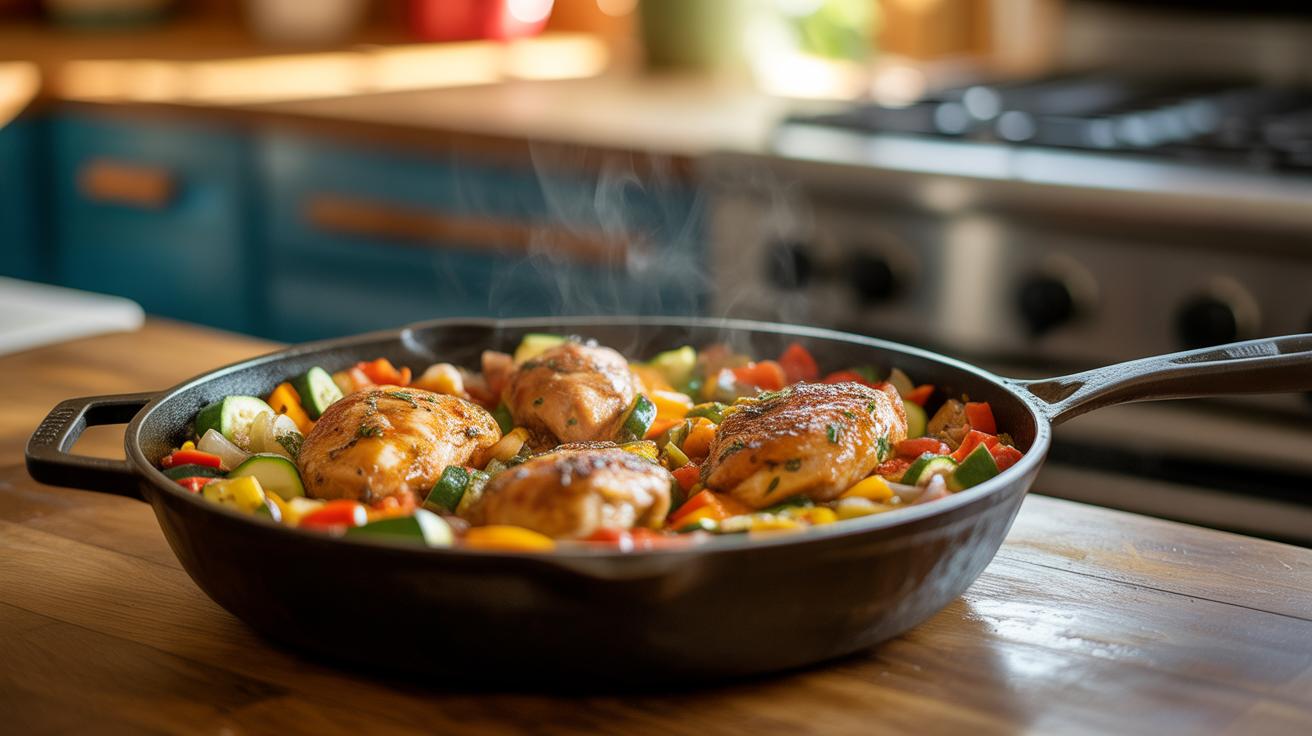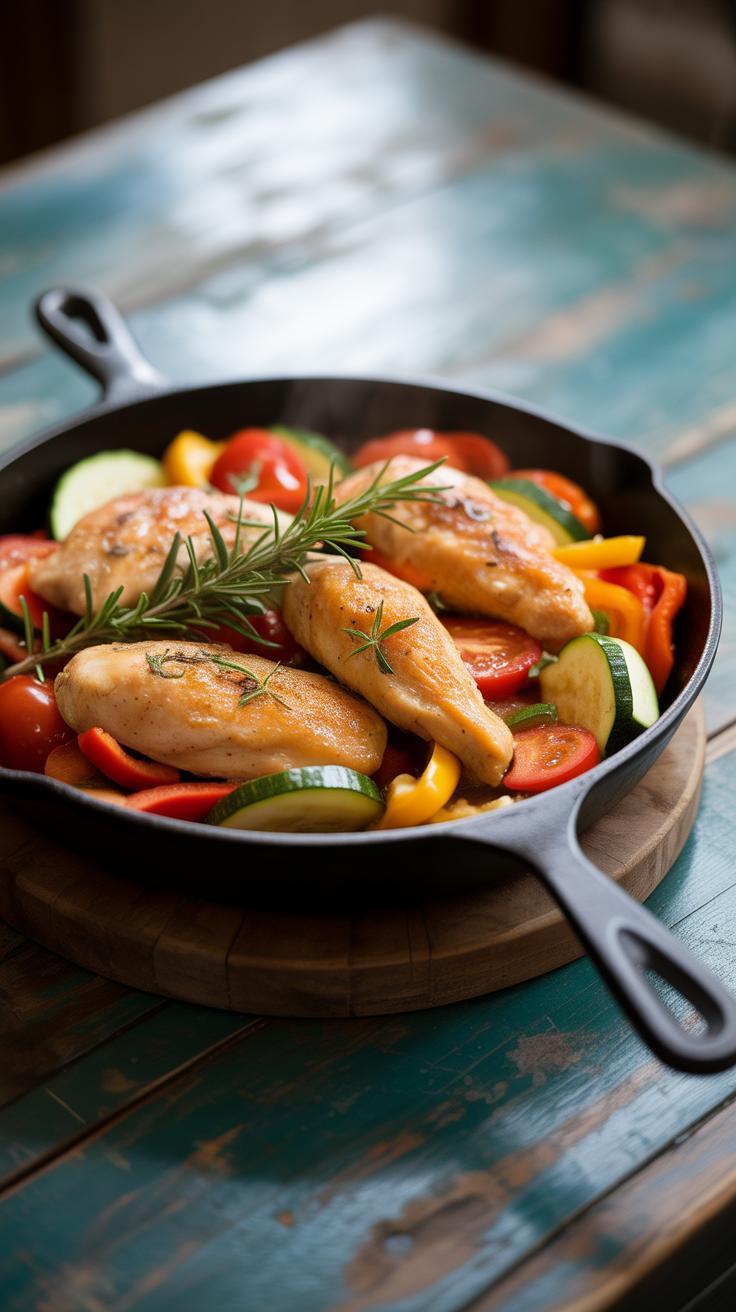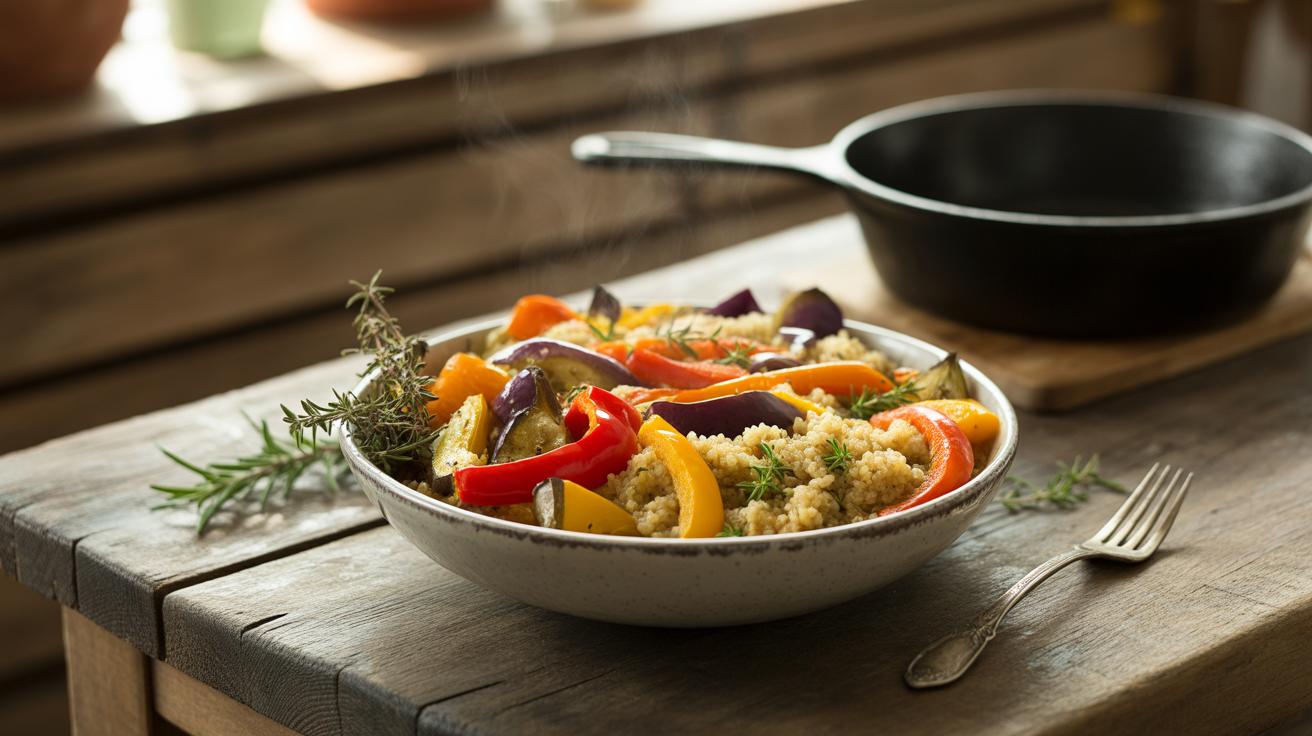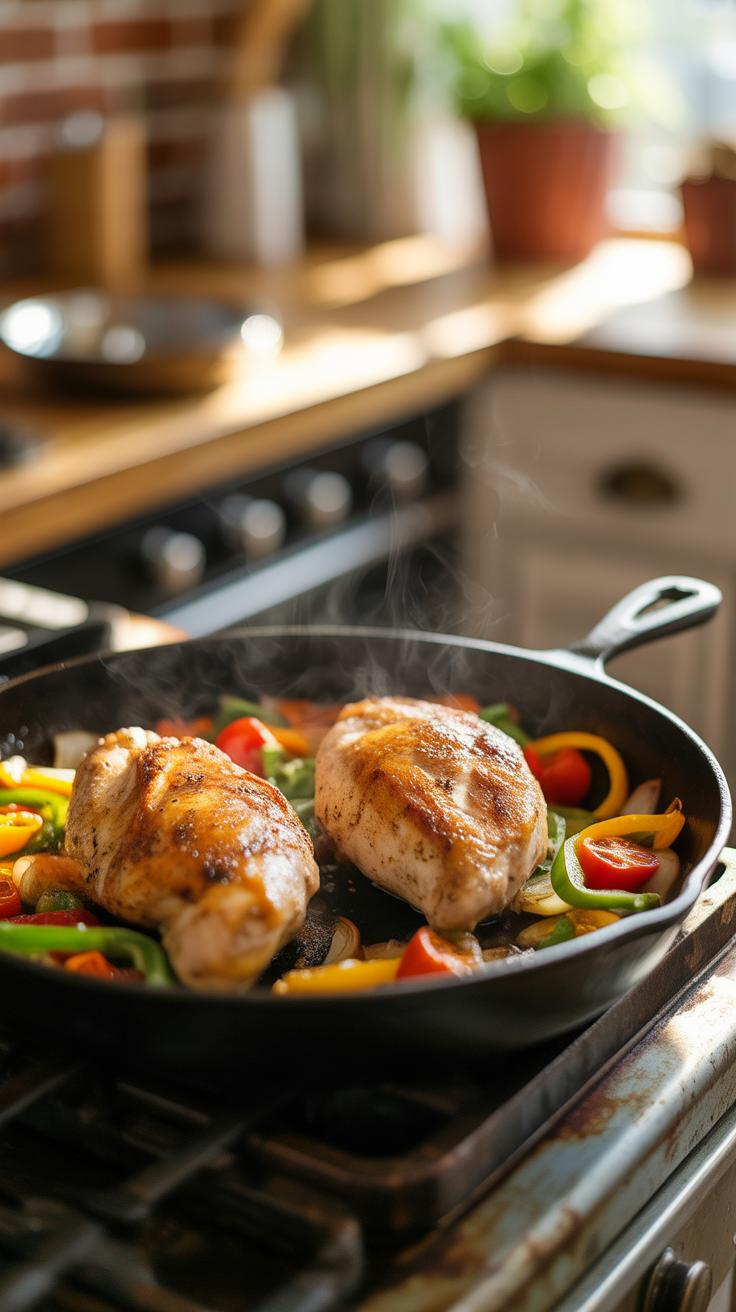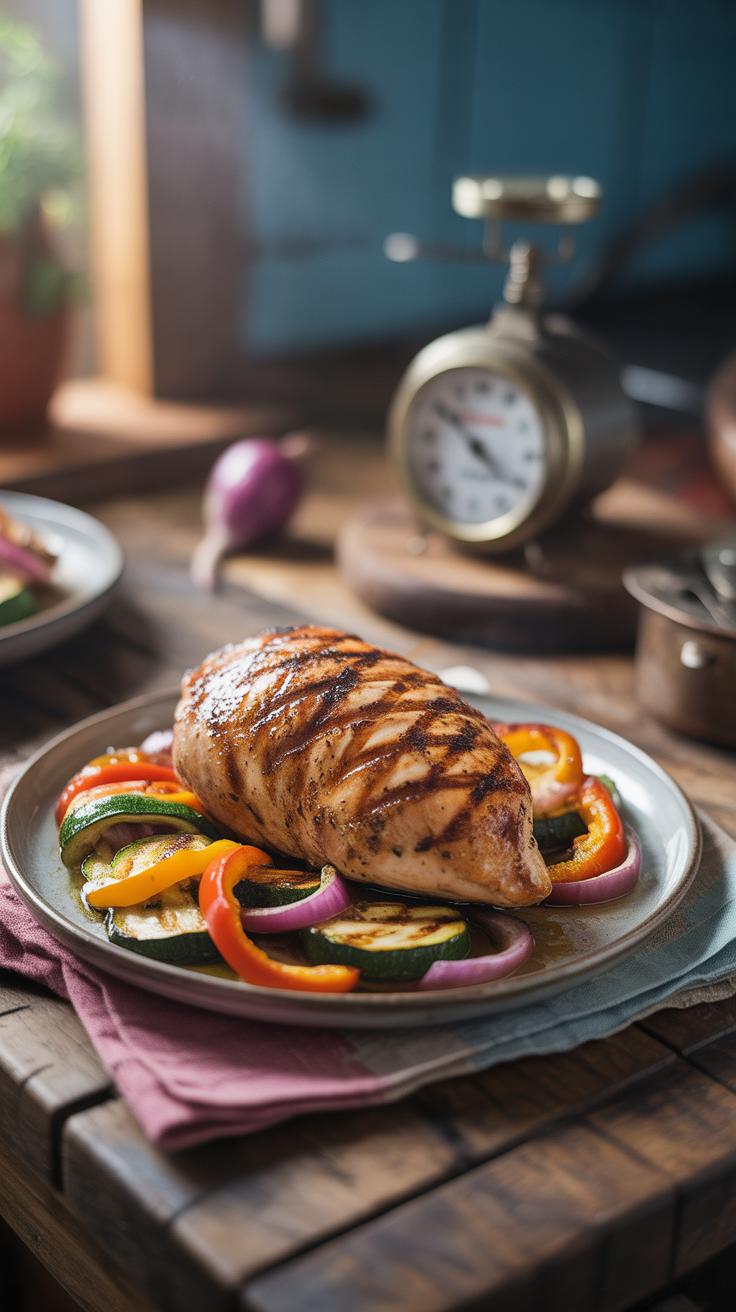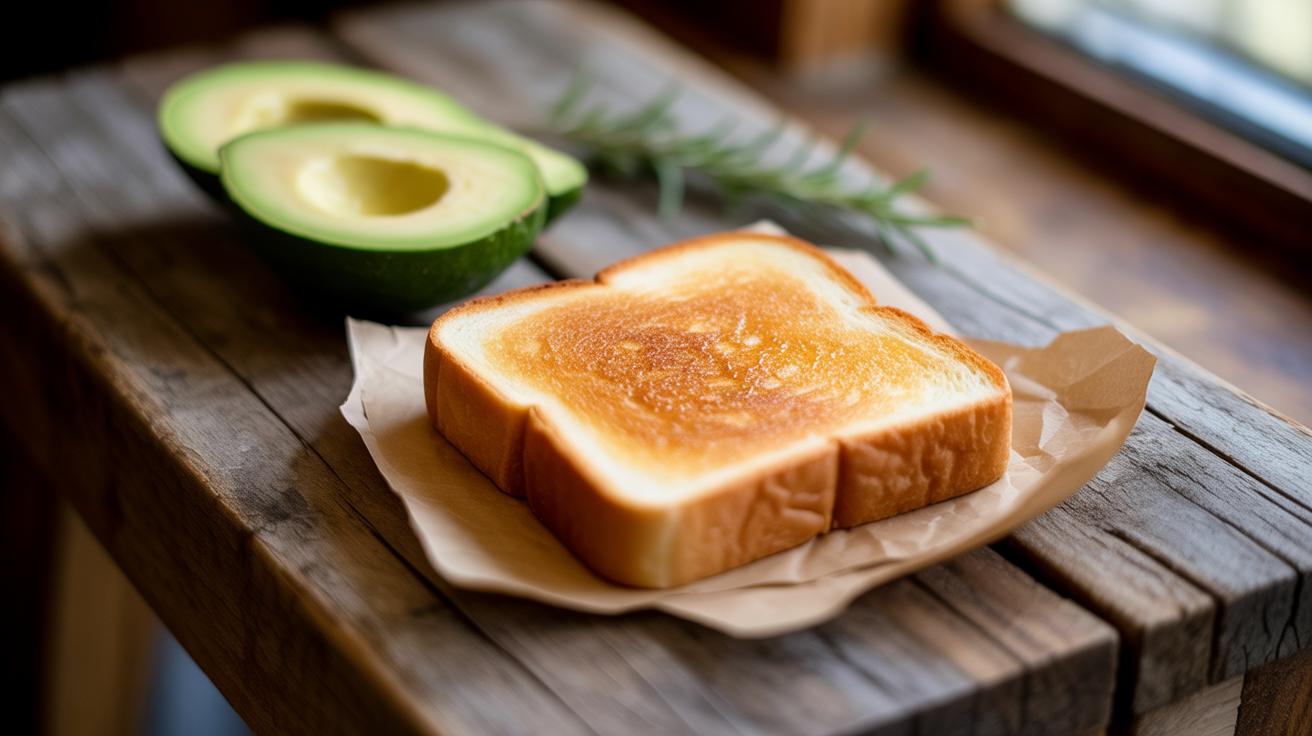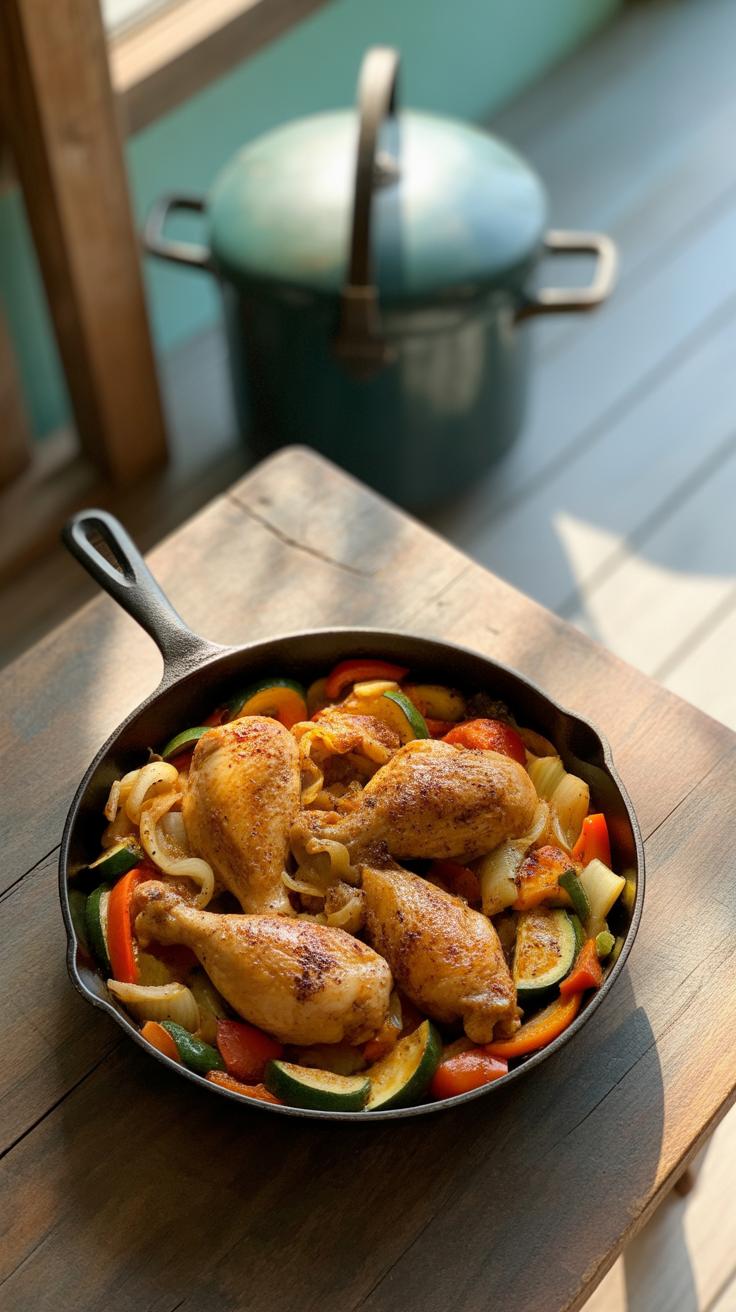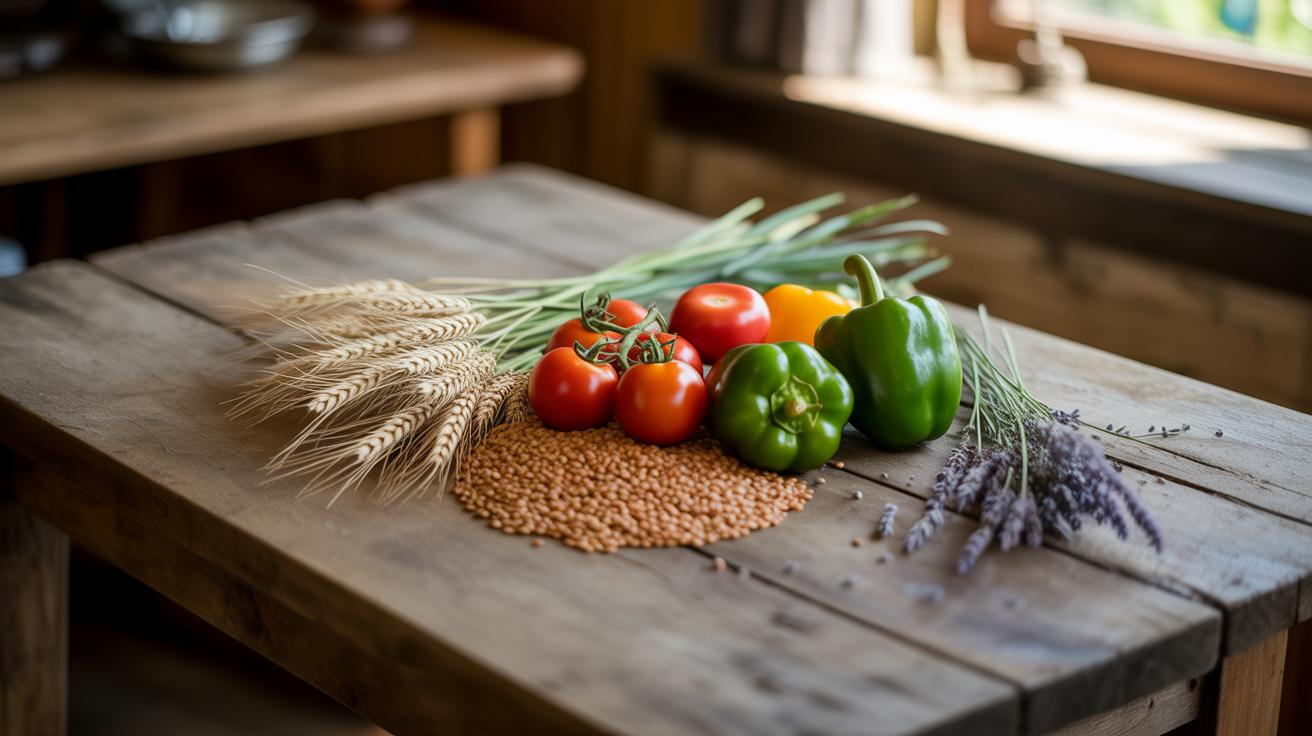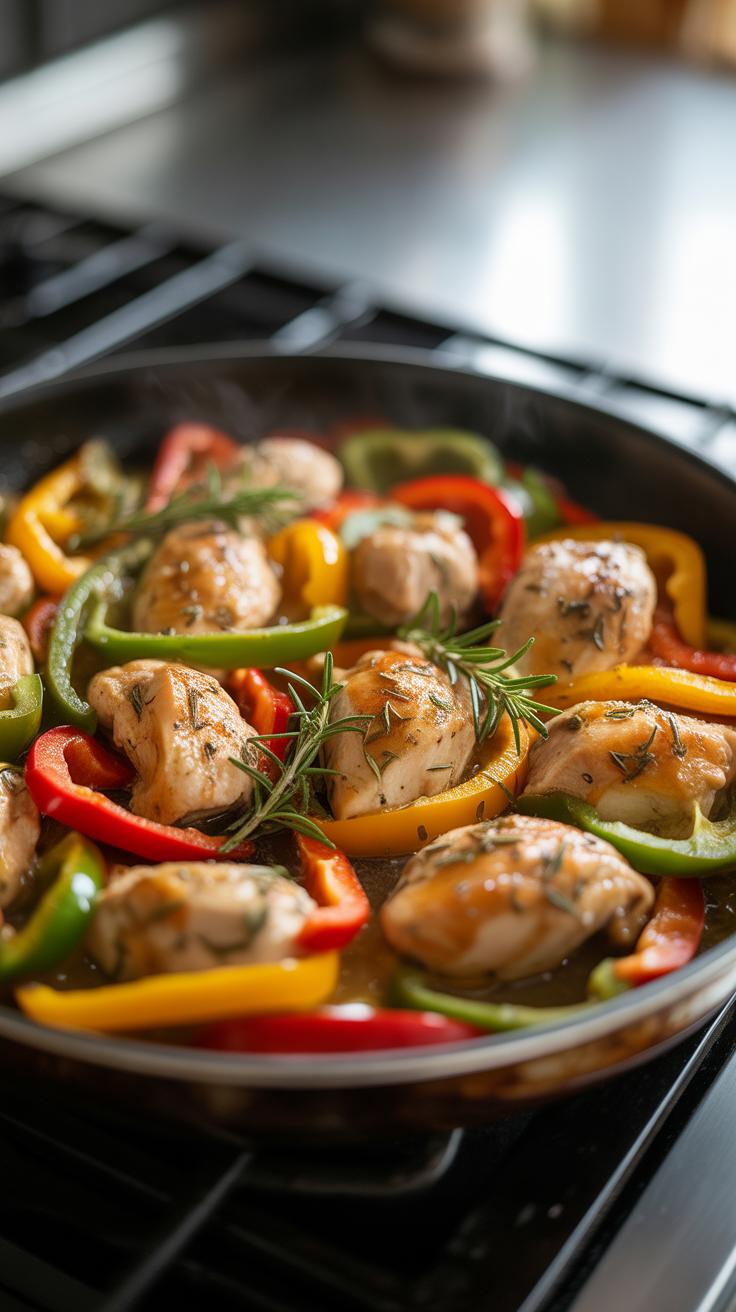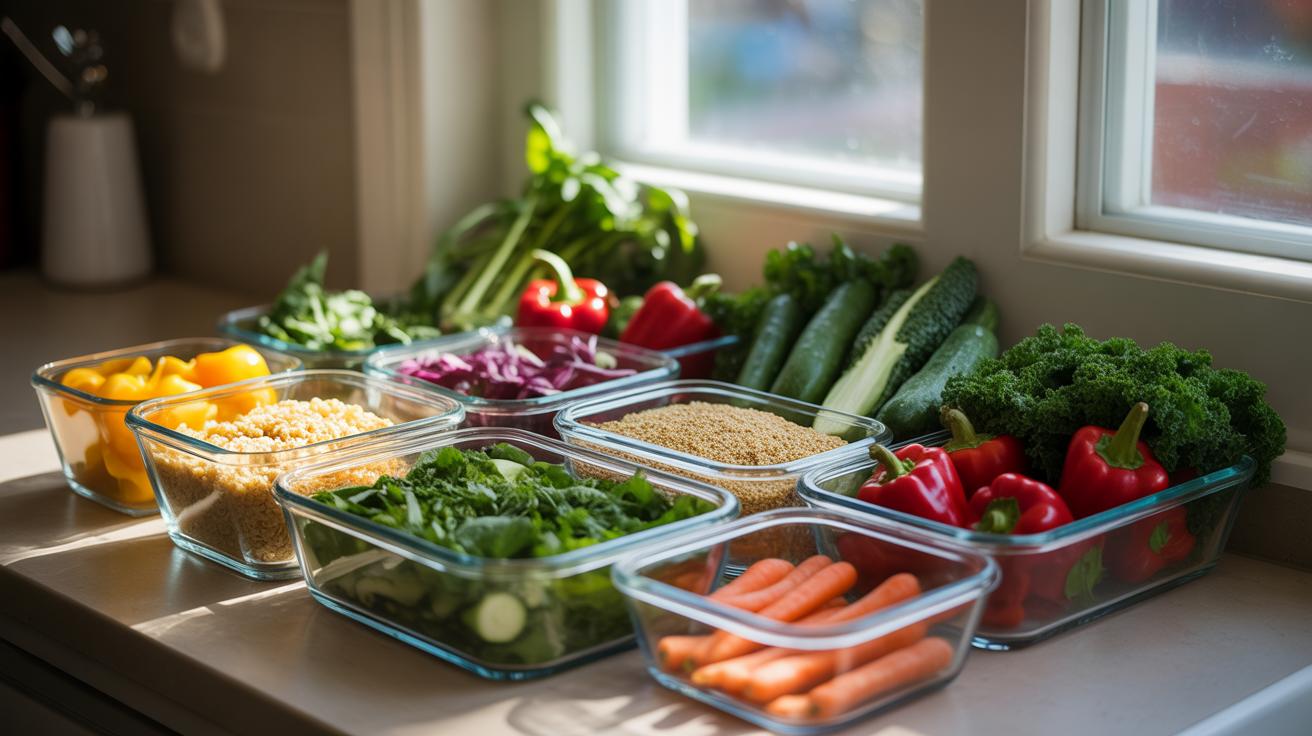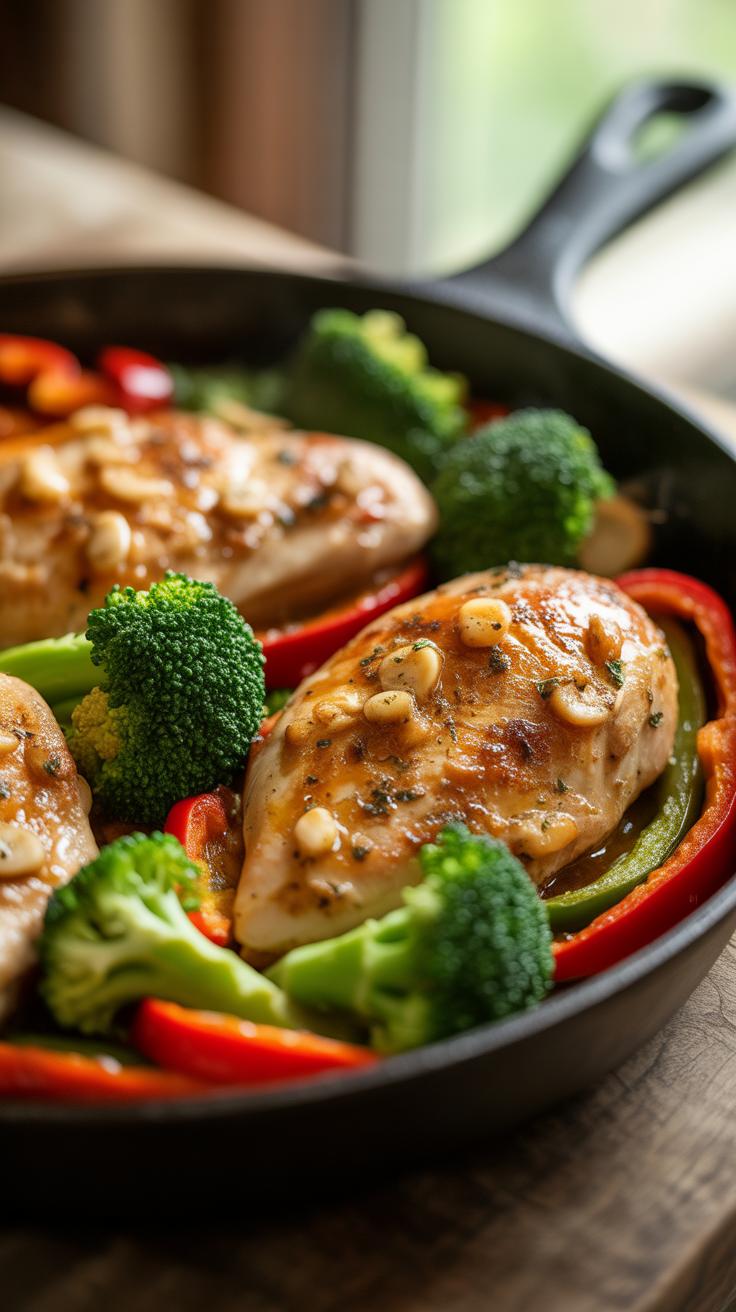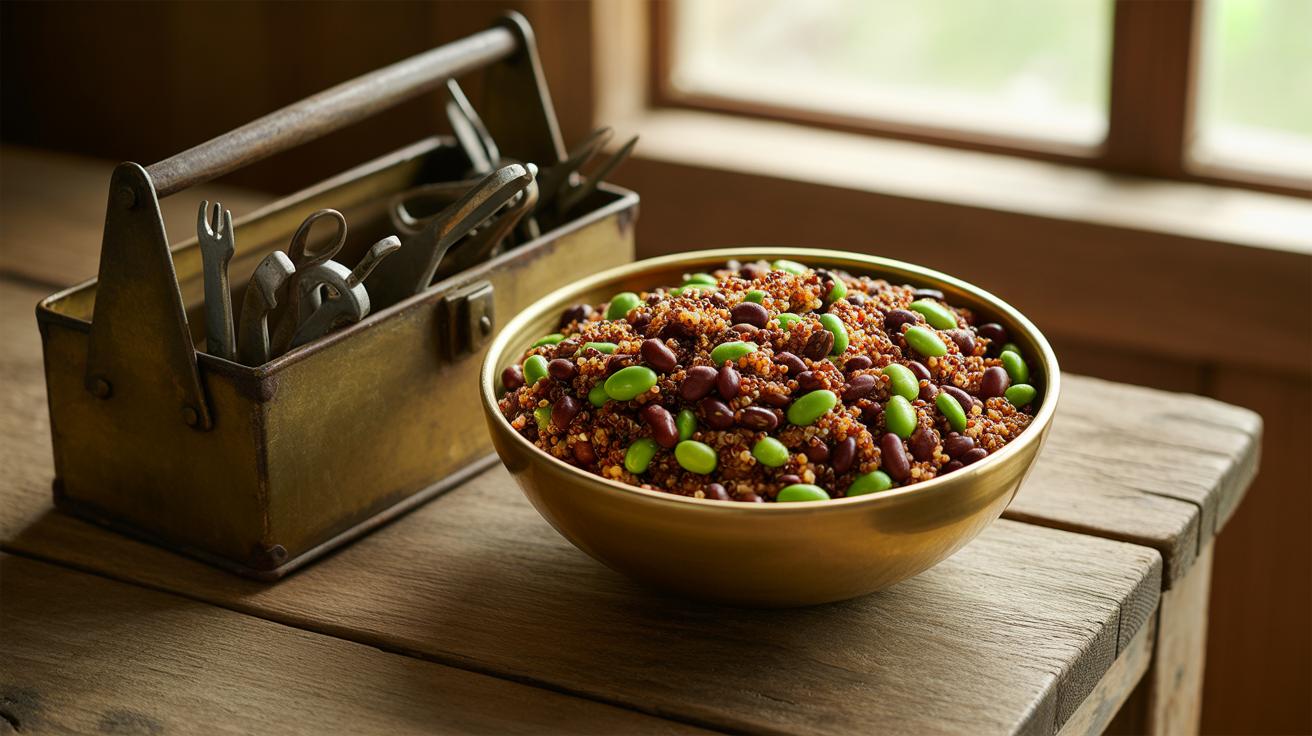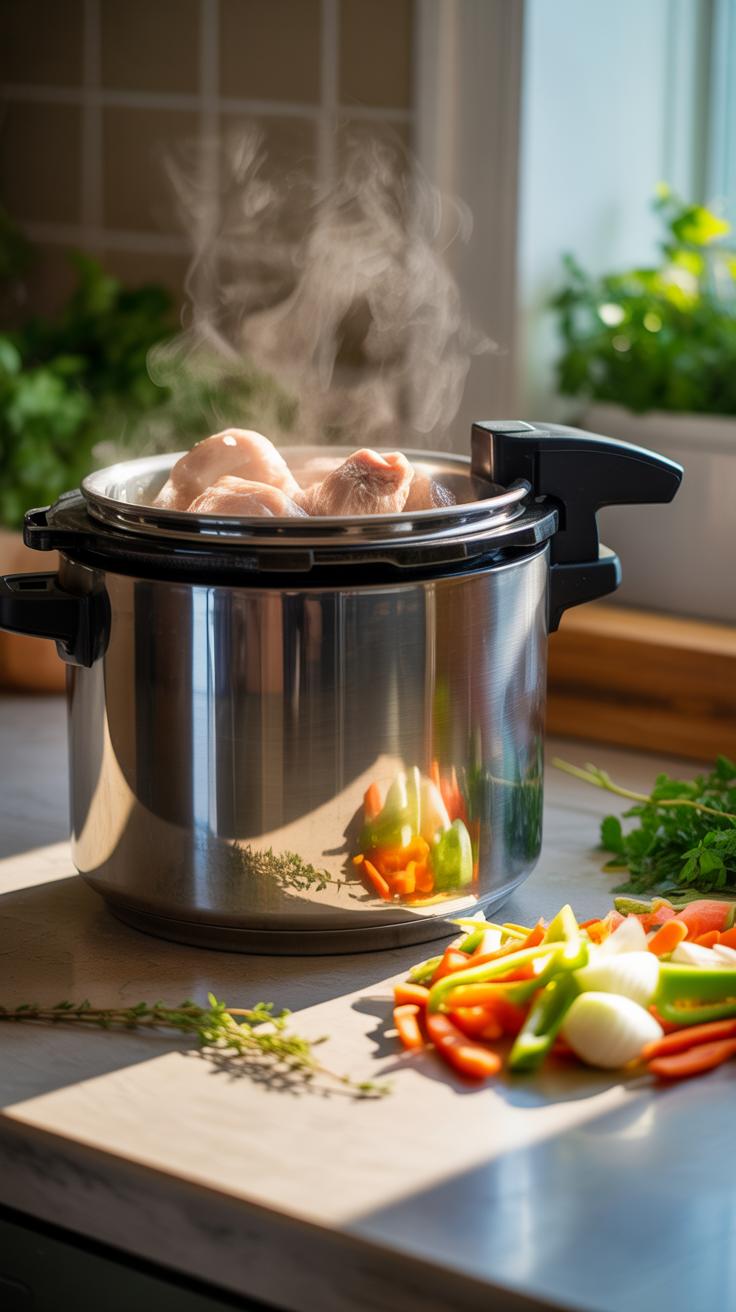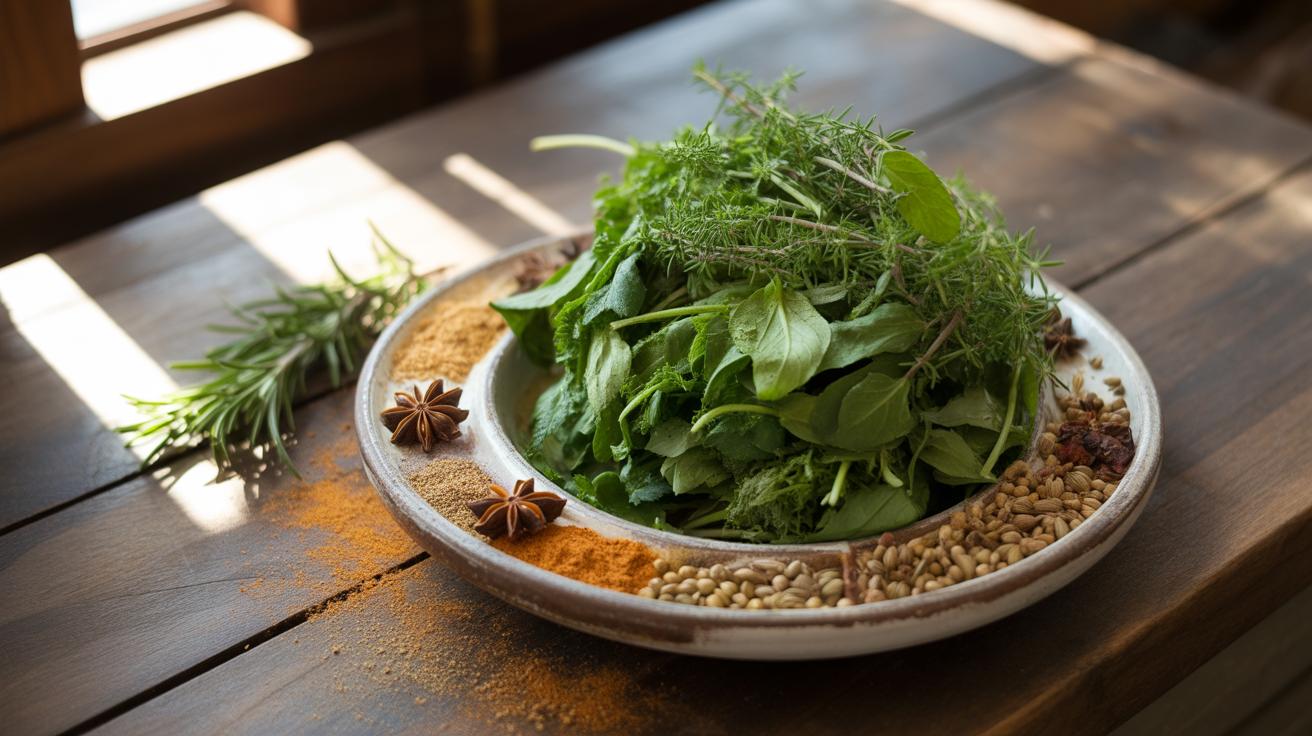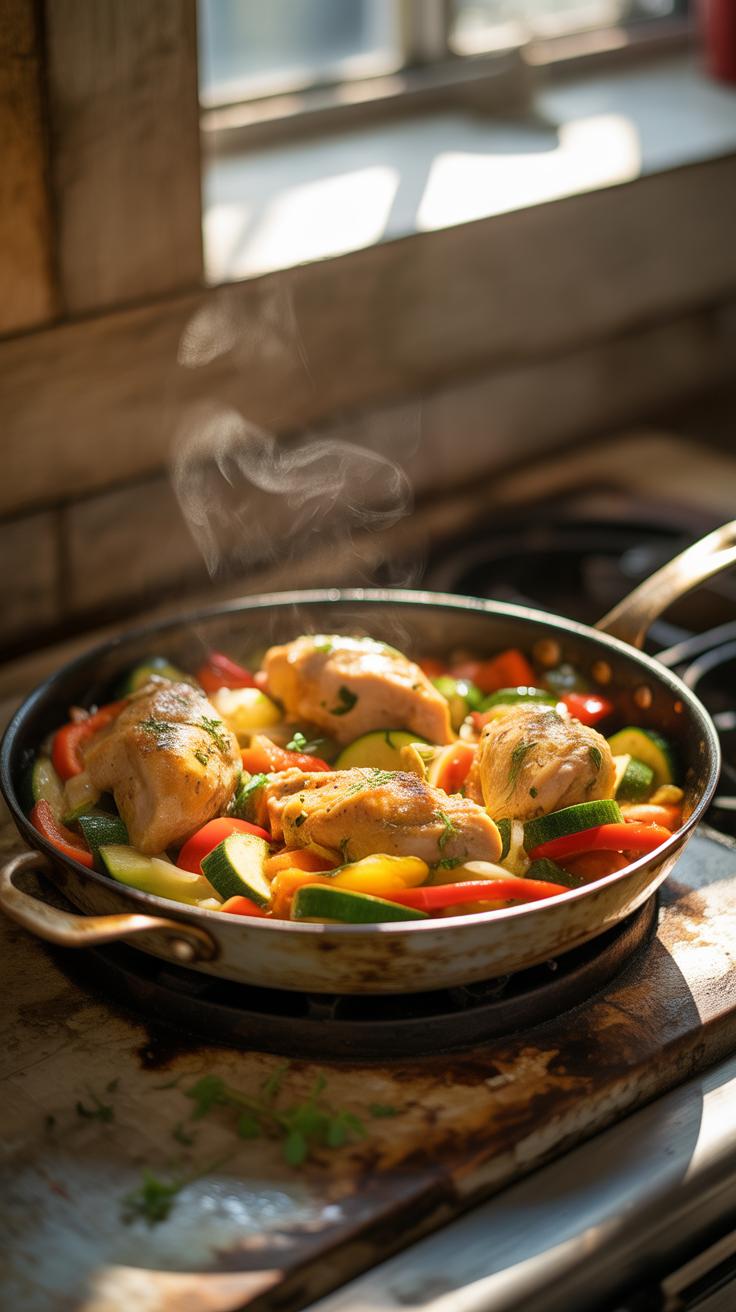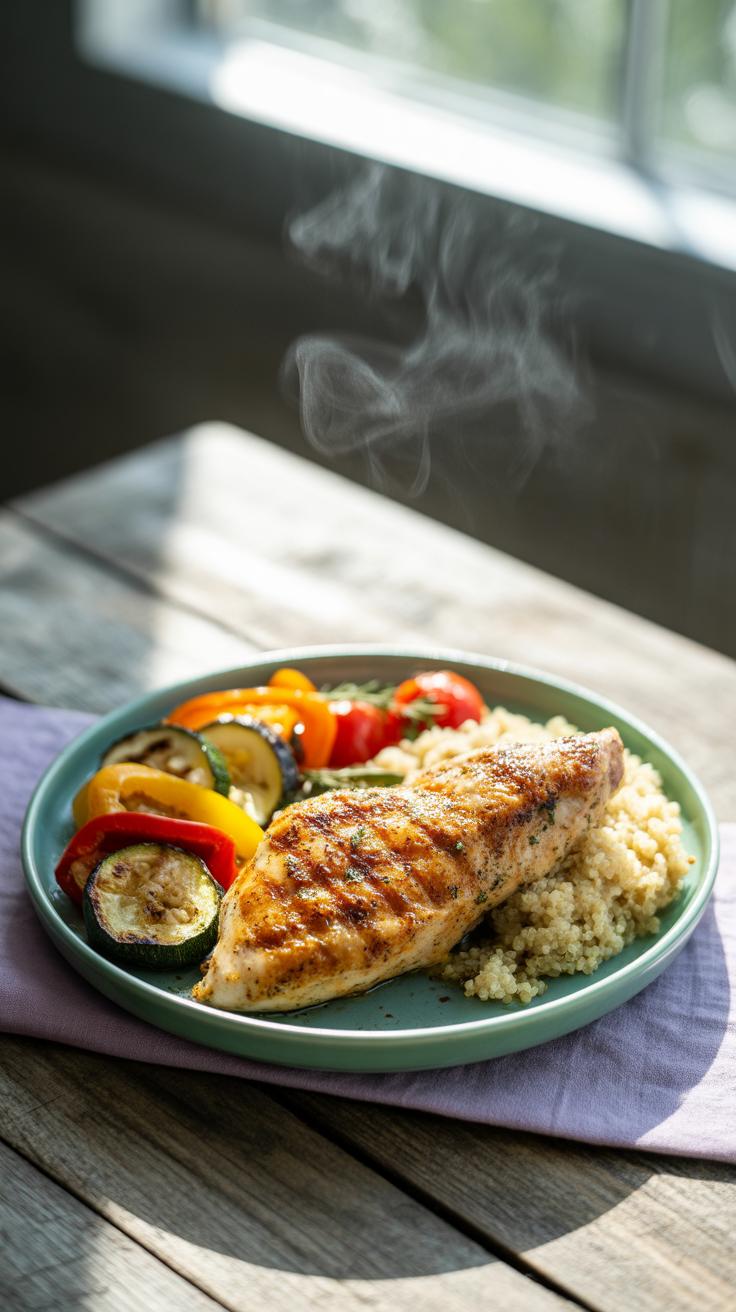Introduction
Finding protein dinner recipes that are both quick and affordable can improve your weeknights. Here, you get 30-minute protein dinner recipes that cost under $15. The recipes focus on meals that you can make fast and keep the budget low without sacrificing nutrition.
Protein is an essential nutrient for your body, helping with muscle repair and keeping you full. This article covers easy recipes, how to choose protein sources, and cooking methods to help you save time and money in the kitchen. Try these recipes to eat well without spending too much.
Budgeting Your Protein Dinner Costs
Keeping your protein dinner under $15 doesn’t have to mean sacrificing quality or nutrition. It takes some planning, sure, but it’s more doable than you might think. One way is to focus on affordable protein sources that still deliver on taste and nutrients. Think beans, lentils, eggs, canned tuna, or whole chickens rather than pricier cuts of meat. These can stretch your dollar further without feeling like a compromise.
Shopping smart is key. Look for sales on meats and freeze portions for later. Bulk buying can be a bit intimidating at first, but splitting large packages of chicken or ground turkey into smaller portions and freezing them can save you big in the long run. Plus, frozen or canned options aren’t as boring as they sound—they’re often just as nutritious and convenient.
Then there’s leftovers. Maybe you cooked more salmon tonight than you needed. Storing leftovers properly is crucial—not just tossing them in the fridge is enough. Using airtight containers and giving them a good life within 3-4 days keeps food fresh and safe to eat. Leftover protein can be turned into quick stir-fries, wraps, or salads the next day, saving cooking time and money at once.
When you plan meals with an eye on cost, focus on balancing portions and mixing proteins with budget-friendly sides, like seasonal veggies or grains. This way, you keep your meals interesting and nutritious, and your wallet won’t groan by the end of the week.
Shopping Tips for Cost Savings
Finding bargains on protein ingredients often comes down to timing and choice. Here are a few practical ways to shop smarter:
- Buy in bulk when you find a deal; separate into meal-sized packs at home.
- Choose frozen or canned proteins such as frozen shrimp, canned salmon, or beans, which last longer and cost less.
- Watch for weekly specials and use store apps to clip digital coupons.
- Visit local markets near closing time when perishable items might be discounted.
- Opt for whole chickens or tougher cuts of beef and pork—they cost less and can be just as tasty when cooked right.
These tactics often surprise people by how much they can trim their grocery bills without losing out on nutrition or flavor. Sometimes, just shifting when and where you shop makes a noticeable difference.
Using Leftovers to Save Money
Leftovers aren’t just extra—they’re an ingredient to work with. Storing them well means keeping them fresh and safe, which you can do by refrigerating in sealed containers within two hours of cooking.
Once you establish a habit of repurposing, dinner ideas multiply. Leftover grilled chicken becomes a quick chicken salad or a hearty filling for tacos. Extra chili or stew? Add some rice or pasta for a new meal that feels different. Even leftover beans can be mashed into patties or blended into dips.
This approach not only cuts down waste but also frees you from daily cooking pressure. It’s practical and, honestly, satisfying to know you’re getting more from each meal. Have you tried turning dinner leftovers into a lunch on the go? It’s often surprisingly easy and saves you money without needing a complete remake of ingredients.
Choosing Fast Cooking Protein Sources
Picking the right protein is key when you want dinner on the table in 30 minutes. Some protein sources just cook faster than others, and knowing which ones save you time can really change weeknight meals.
Animal Proteins That Cook Quickly
Chicken breasts are a reliable choice—they usually cook in about 15 minutes on the stovetop or in the oven. Thin cuts or pounding the meat thinner can shave off a few minutes. Ground meats are even quicker; ground beef or turkey browns in less than 10 minutes, making them perfect for stir-fries, tacos, or pasta sauces. Fish is another fast option; fillets like tilapia or salmon often cook through in 8 to 12 minutes, depending on thickness. They’re great for pan-searing or baking. These proteins absorb flavors quickly, so seasoning early helps, but marinating isn’t necessary unless you have extra time.
Plant-Based Proteins for Quick Meals
Plant proteins can be a little trickier, but some are surprisingly fast. Lentils, especially red or yellow ones, cook in about 15-20 minutes and don’t require presoaking—great for soups or curries. Canned beans are even faster and just need rinsing and warming, which works well if you’re making chili or bean salads. Tofu cooks quickly too; firm or extra firm varieties can be stir-fried or baked in about 15 minutes. Pressing tofu beforehand helps remove water and improves texture but skipping this step is fine in a pinch. Quick preparation and smart use of canned or pre-cooked options keep these plant proteins dinner-friendly on time and budget.
StepbyStep Protein Dinner Recipes
Chicken Stir-Fry with Vegetables
Start by thinly slicing about a pound of chicken breast. Heat a tablespoon of oil in a large pan over medium-high heat. Toss in the chicken pieces, cooking until they start to brown—about 5 to 7 minutes. While the chicken cooks, chop up a mix of budget-friendly fresh vegetables like bell peppers, broccoli, and carrots. After the chicken is mostly done, add these vegetables to the pan. Stir continuously to keep things moving and avoid burning. Cook for another 8 to 10 minutes until the veggies soften but still have some crunch.
For flavor, use a simple sauce made from soy sauce, a splash of water, and a pinch of garlic powder or fresh minced garlic if you have it. Pour this over the stir-fry and mix it well. Serve hot, maybe with rice or noodles you had on hand. This meal should cost around $12 depending on where you buy ingredients and keeps your protein intake solid while being surprisingly quick.
Lentil and Rice Bowl with Spices
For a plant-based option, rinse a half cup of lentils and cook them in a pot with about a cup of water. While they simmer, prepare half a cup of rice separately—white or brown, whichever fits your budget and time. Lentils usually take around 20 minutes, which fits nicely within the half-hour limit.
Once cooked, combine the lentils and rice in a bowl. Now, the trick is the seasoning. Use cumin, paprika, and a bit of chili powder or curry powder—whatever you prefer or have handy. A squeeze of lemon juice brightens the flavors. This simple blend adds enough kick without complicated steps or expensive spices. It’s filling, high in protein, and can be made for under $10 when bought in basic bulk packages. Have a taste before serving—sometimes a little more salt or a touch of olive oil makes all the difference.
Preparing Protein Quickly and Safely
When you’re short on time, handling protein safely while moving fast can feel tricky. But careful prep can actually save you minutes and keep everything edible and safe. Start with thawing—never leave protein out on the counter to thaw. That’s a shortcut many think works, but it’s risky for bacteria growth.
Instead, try these quick and safe methods:
- Cold water bath: Seal your protein well in a plastic bag, then submerge it in cold water, changing the water every 30 minutes. This speeds thawing without compromising safety.
- Microwave: Use the defrost setting, but watch closely. Some edges might start cooking if left too long, so get it out as soon as it’s soft enough to work with.
Cleaning protein is often overlooked. Rinse poultry and fish quickly under cold water just before cooking—not ahead of time—because lingering moisture can promote bacteria.
When cooking, choose methods that both cook faster and make sure the protein stays safe to eat. High heat techniques like pan-searing, grilling, or broiling can quickly create a safe exterior while locking juices in. Stir-frying offers speed by cutting protein into small pieces, spreading heat evenly.
Use a thermometer when possible—it’s the safest bet to confirm your protein’s done. Not always handy? Cook until juices run clear and the meat feels firm. It’s not perfect but is usually reliable.
Fast preparation doesn’t have to mean cutting corners or stressing out. Sometimes, being a little cautious and methodical actually lets you work quicker.
Balancing Nutrition in Quick Dinners
When you’re whipping up a quick protein dinner, it’s easy to focus solely on the protein part. But balancing your meal with vegetables, fats, and carbs matters just as much. Think about it: a chicken breast alone is fine, but add some greens, a bit of healthy fat, and a carb source, and suddenly you’ve got a meal that fuels your body better and keeps you full longer.
Adding vegetables doesn’t have to be complicated or time-consuming. Vegetables like spinach, zucchini, and bell peppers cook fast and bring color, texture, and nutrients without busting your budget. They offer fiber, vitamins, and antioxidants that protein alone can’t provide. Quick tips? Toss veggies into the pan while the protein cooks or steam them in the microwave for a couple of minutes. It’s a small step that makes a big nutritional difference.
For fats and carbs, simple choices work well. Healthy fats such as a drizzle of olive oil, a few nuts, or avocado chunks add richness and help your body absorb fat-soluble vitamins. Carbs can come from affordable staples like brown rice, sweet potatoes, or whole grain bread. They provide energy and fiber. It can feel like a balancing act but mixing these elements thoughtfully turns a basic dinner into something that supports your overall health, without extra cost or stress.
Comparing Protein Sources by Cost and Time
Picking the right protein for your dinner can be tricky—there’s the price, how long it takes to cook, and what you actually get out of it nutritionally. Let’s break down some common proteins: chicken, beef, lentils, and tofu. Each has its quirks and advantages, depending on what you’re looking for.
When it comes to cost, chicken usually wins for affordability and versatility. You can often find boneless, skinless chicken breasts for under $3 a pound, which translates roughly to $1.50 to $2 per serving. Beef tends to be pricier—ground beef might run about $4 to $6 per pound, pushing each serving closer to $3 or $4. Lentils and tofu, on the other hand, are surprisingly budget-friendly. Lentils often cost less than $1 per serving, and tofu hovers around $1.50 to $2 per serving, depending on the brand.
Cooking times vary quite a bit. Chicken breasts take about 20 to 30 minutes to cook thoroughly, while ground beef might be ready a bit faster—say 15 to 20 minutes. Lentils are a bit slower; even quick-cooking varieties need at least 20 to 30 minutes. But they don’t require much prep, which sometimes balances things out. Tofu cooks fastest since it’s usually just pan-fried or baked, often done in under 15 minutes.
Nutritionally, chicken and beef are both complete proteins, packed with all essential amino acids. Yet, beef tends to carry more fat, which might be a consideration if you’re watching calories. Lentils are a great plant-based protein source but are not complete on their own—they pair well with grains to round out that profile. Tofu also supplies a full amino acid set, with the added bonus of being low in saturated fat.
So, what fits your night best? If speed’s the priority and you want a lean protein, tofu or ground beef might work. On a tighter budget and willing to spend a bit more time? Lentils could be the way to go. For a middle ground, chicken offers a solid balance. It’s a bit of a trade-off, really. Your choice can depend on what else is in the fridge or what you’re craving—sometimes practical, sometimes just what feels right.
Tools That Help Speed Up Dinner Prep
You probably know that having the right tools can make cooking protein dinners quicker and less stressful. But what exactly should be on your countertop or tucked away in drawers? A few key items really stand out, especially when time and budget are tight.
Essential Kitchen Tools for Fast Cooking
Pressure cookers are lifesavers. They reduce cooking times dramatically, especially for tough cuts of meat or dried beans. I’ve found that using a pressure cooker for chicken thighs or beef stew cuts the wait from hours to under 30 minutes. Just make sure you follow the instructions carefully—rushing to open it early can be risky.
Skillets, especially heavy-bottomed ones, are another must-have. They heat quickly and distribute heat evenly for searing protein. A cast iron skillet, for example, not only adds great flavor but keeps the cooking surface hot, speeding the process. Preheating the skillet thoroughly before adding meat really changes the game.
Sharp knives are surprisingly powerful time-savers. Dull blades slow you down and can be unsafe. I like to keep a chef’s knife honed regularly with a steel. It’s simple to do and keeps cuts clean. Clean cuts mean quicker cooking and less mess. Plus, chopping veggies or slicing chicken breast feels less like a chore when your knife slides through effortlessly.
Maintaining Tools for Efficiency
Keeping your knives sharp and clean is critical but often overlooked. A dull knife forces you to exert more force and increases the chance of accidents. I try to sharpen mine every few weeks or whenever chopping feels tougher than usual. Wiping them clean immediately after use prevents rust and prolongs sharpness.
Pressure cookers need routine checks too—gaskets should be flexible, and valves clear of residue. A stuck valve can slow things down or become dangerous. Skillets, especially cast iron, require seasoning after thorough cleaning to avoid sticking and maintain surface quality. I’ve learned the hard way that ignoring these steps turns a helpful tool into a heavyweight problem.
Sometimes investing a little time in upkeep saves you frustration and cooking delays later. Do you find yourself avoiding certain tasks because your tools aren’t up to speed? Maybe spending just a few minutes maintaining them could change that.
Common Mistakes in Quick Protein Meals
One of the most frequent issues when cooking quick protein dinners is overcooking or undercooking the protein. This usually happens because people rush, guess cooking times, or rely too much on visual cues. Overcooked chicken or fish turns dry and tough, making the dish less enjoyable and sometimes unsafe if undercooked. To avoid this, try using a meat thermometer or timing based on weight rather than just eyeballing. For example, a 4-ounce chicken breast generally takes about 6-7 minutes per side on medium heat, but that varies. Getting familiar with your stove and pan makes a big difference.
Another common mistake is buying too many ingredients or ones you don’t actually need. It’s easy to think, “Oh, I’ll use all this,” but sometimes those extras go to waste. This not only costs more but lengthens prep and cleanup time. Planning ahead can help you stick to just what’s necessary—like buying bulk chicken but portioning it into meals instead of buying different proteins for one dinner. Also, take stock of what’s already in your fridge or pantry before heading out. You might find you only need a few things to complete your meal, keeping costs down and preventing waste.
Do you ever feel like buying in bulk saves money but then you never finish it? That’s a tricky balance. Perhaps start with versatile ingredients that can be used in multiple recipes across the week. That way, you avoid buying single-use items that end up forgotten. Little adjustments like these can keep your quick protein dinners both budget-friendly and satisfying.
Making a Weekly Plan for Fast Protein Dinners
Creating a Simple Weekly Dinner Schedule
When setting up your weekly dinner plan, start by choosing recipes that mix up different protein sources. Maybe chicken one night, beans the next, then fish or tofu later. It keeps things interesting and helps avoid boredom. Plus, rotating proteins can help stretch your budget since some options, like legumes, tend to be cheaper than meat.
Try grouping meals by what’s on sale or what’s already in your pantry. That can make a big difference in total cost. It’s tempting to pick your favorites every time, but adding one new recipe to the list might surprise you—sometimes simple swaps bring new energy to dinner without extra spending.
Also, think about your schedule. If you know Tuesday is your busiest night, slot in a recipe that’s quicker to cook or can be reheated easily. Planning like this can prevent those last-minute takeout temptations that derail both your time and budget.
Prepping Ingredients in Advance
Preparing parts of your meal ahead of time can be a real lifesaver. Chopping vegetables, marinating meats, or cooking grains in advance means you’re not stuck staring at your stove after a long day. I’ve found even just washing and slicing greens or measuring out spices earlier can shave precious minutes off dinner prep.
While it may feel like extra work upfront, it often reduces the overall strain. Plus, it makes it easier to throw together a meal quickly without scrambling for ingredients. Sometimes, I keep prepped items in clear containers so I can see what’s ready to go. It nudges me to actually use them instead of letting them languish in the fridge.
Do you find yourself more likely to cook when things feel organized? Meal prepping can help with that. It might not suit every night, but even partial prepping is a little hack that brings some calm to busy evenings—and saves you a bit, too.
Conclusions
Choosing the right protein sources and cooking methods allows you to prepare healthy dinners in under 30 minutes and within a $15 budget. These meals provide the energy and nutrients you need without extra time or cost. By planning and using the tips given, cooking dinner becomes faster and easier.
Use the recipes and advice to enjoy different tasty protein meals each day. This approach helps you eat well and avoid expensive or time-consuming dinners. Focus on simplicity, nutrition, and cost to meet your needs every night.

